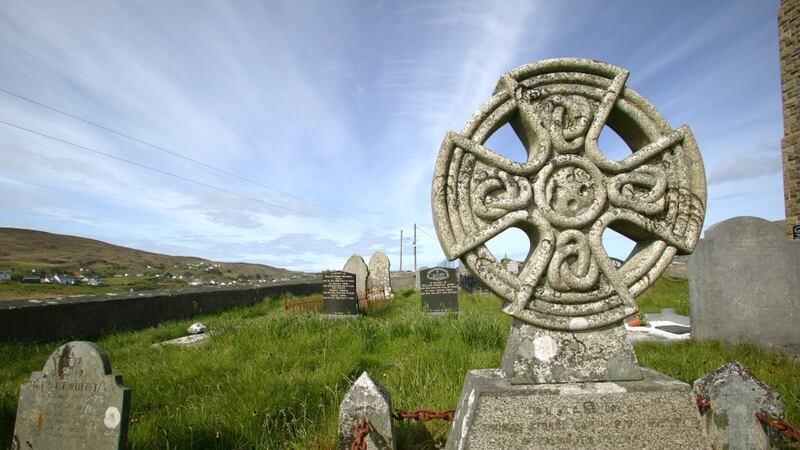|
Gleann Cholm Cille, Co Donegal
Map: Ordnance Survey Ireland, Discovery Series, Sheet 10. |
Driving in from the bog above, Gleann Cholm Cille appears like a Greenlandic outpost, a scatter of low buildings enclosed by sea and mountain. A web of bog tracks takes you into the hills north of the village – a branch from one leads to an early 19th-century lookout tower, on the 220m cliffs at Glen Head.
Local teacher Thomas McGinley found this height too great to comprehend the sea below. “Both vision and hearing fail . . . at this awful altitude,” he wrote.

McGinley walked this coast in the 19th century, documenting its wildlife and history. The Derry Journal published his notes weekly under the pen-name Kinnfaela, and later collected them in a book The Cliff Scenery of South Western Donegal.
I abandon the trail at the tower and follow the coast. Soon the cliffs indent sharply and the ground drops steeply to a small valley – move inland to cross the valley safely and rejoin the cliffs on the other side.
Up ahead the coast cuts out to sea at a right angle – this is the Sturrall, a vertical headland where locals once picked edible rock samphire, McGinley wrote. Some even descended the cliff to gather seaweed on the shore far below.
His book tells the story of a rector’s son who planned to swipe eggs from an eagle’s nest on the Sturrall. Locals warned against it, but this hardened the lad’s ambition, and he raved about the idea in his sleep. One night he sleepwalked up to the cliffs and strode out the Sturrall through wind and rain. The next morning he told his mother he had dreamt of robbing the nest, and she promptly handed him the eggs he’d brought back in the night.
Following the cliffs, the terrain shifts from dry heather to muddy bog to a forest of dead ferns. Two choughs let out laser-like calls above me – these red-billed crows live along our western coasts, but their numbers are declining.
Soon a track leads down to the shore at Port, a ruined settlement that was home to a few shepherds during the 19th century. Nearby in 1870 a storm sunk the Sydney, a cargo ship taking timber from Quebec to Scotland. Four of the 19 dead are buried at Port.
I climb up Port Hill along the cliffs for a view of Tormore, Ireland’s highest sea stack. Local folklorist Seán O’Heochaidh told a story of the stack: Jack Mór climbed it to hunt seabirds during the famine. He met another man on the same mission, and both filled their bags with birds. But Jack Mór weakened on his way down and couldn’t carry on. The other man went for help, but a great storm blew in. Jack Mór was stranded for a fortnight. When his rescuers arrived, there was nothing left of Jack but his bones. It was said these could still be seen on the side of Tormore 70 years later.
Daylight was against me and it was time to head back down to Port, where the bog track offers a different return route to Gleann Cholm Cille. Since setting out, the valleys had grown progressively more remote: first Gleann Cholm Cille itself, then the backwater of Port, and now ahead of me was Glenlough, with ruined cottages that no road reaches.
The American painter, Rockwell Kent, stayed at Glenlough in 1926 while painting this coast. The Welsh poet, Dylan Thomas, spent a summer there too, trying to wean himself off alcohol by walking and writing. But the black nights and isolation got to him, and in letters to a friend he recalled encounters with Count Antigarlic, “a strange Hungarian gentleman . . . coming down the hill in a cloak lined with spiders”. The local poitín may have gone to his head.